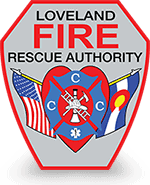
Loveland Fire Rescue Authority CWPP
2023 Community Wildfire Protection Plan
Welcome to the Loveland Fire Rescue Authority (LFRA) 2023 CWPP story map. This is an accompaniment to the 2023 Community Wildfire Protection Plan (CWPP) for LFRA.
Explore the maps and information using the tabs in the header to jump between sections, and click on the buttons on maps to interact with them.
Background
Historic and present day photos from the same locations within LFRA.
Before the US West was settled starting in the 1800s, the ecosystems here were generally adapted to wildfires. Forests with ponderosa pine had low-severity wildfires every 5-30 years that burned grasses, shrubs, and small trees, and it gave the trees space to grow strong and healthy without competition from other plants. Forests like lodgepole pine or high alpine spruce and fir forests would have large, intense wildfires every 150-300 years that would clear an area so that the seeds of the trees that had been waiting to sprout had sunlight and space to regrow. Native Americans who lived and moved through these valleys encouraged and facilitated wildfires where the land needed it to promote healthy ecosystems for crops and foraging.
However, when the land was settled and people built permanent homes, the fear of fire caused land managers to stop all wildfires that started near people. After more than a century and a half of fire suppression, many forests have become crowded with trees. This makes forests unhealthy and more susceptible to pests and extreme wildfire behavior.
Because of this history of fire suppression, combined with the effects of climate change, communities in Colorado and the US West have experienced wildfires that have been burning larger areas more severely than in the past. It is the responsibility of land managers, agencies, and private homeowners to reduce the risk of wildfires on their lands. Restored ecosystems that are similar to their historical state are more resilient to wildfire and can support diverse plant and animal life.
Community Wildfire Protection Plans are created with and by the communities they are for. They outline the current risks that the community faces and highlight the highest priority actions for people to take to reduce that risk. They are built on the idea of Fire-Adapted Communities. The graphic to the left shows the components of a fire-adapted community.
Plan Units
The CWPP divides the Fire Authority into planning units. These units help compare risk across the district and share specific recommendations for homeowners in each area. Plan units share similar vegetation, topography, home construction, and social groupings.
To find out what plan unit you live in: zoom in on this map to see parcel boundaries, or click on the button in the top left corner to search for your address.
Fire and Fuels Treatment History
To strategically plan future treatments, we need to know where past fuels treatments and wildfires have occurred. This map shows where recent fires and fuels treatments by land managers and agencies have been. Click on an area to learn more about what happened there.
Wildland-Urban Interface
The wildland-urban interface (WUI) is where the built environment meets naturally fire-adapted ecosystems. In Loveland, we define the WUI as having two types - the wildland-urban interface that is connected for forest and shrublands, and the grassland-urban interface (GUI) that is connected to grasslands. Both types of ecosystems are adapted to fire, but the fire behaviors that residents and businesses should prepare for are different.
Current Fire Risk
Fire Behavior
Modelling fire behavior can show the predicted fire behavior for a given area and the likelihood that that area will burn. We modelled fire behavior under both extreme and moderate weather conditions.
The top map shows predicted fire behavior, from low to extreme. The bottom map shows fire likelihood, from low probability to high probability. Use the swiping tool in the center of the map to compare between extreme (left) and moderate (right) conditions.
Roadway Safety
Some roads within LFRA have vegetation and topography that may lead to extreme fire behavior and long flame lengths. This vegetation can create potentially non-survivable conditions for evacuating residents and incoming firefighters. Ensuring that residents can evacuate safely on roads is a priority in the CWPP.
Use the swiping tool in the center of the map to toggle between extreme (left) and moderate (right) conditions.
Priority Projects
Landscape and Roadway Treatment Priorities
The colored shapes on the map below represent the top priority landscape-scale fuels treatment projects. This is where land managers and private landowners work together to effectively reduce the risk of severe wildfire by managing the trees and vegetation across hillsides and along riverbanks. Management here will typically involve removing some of the trees and vegetation to restore historic forest conditions or create tactical fuel breaks for firefighters.
The highlighted sections of road are most likely to have congestion during evacuations and/or experience potentially non-survivable road conditions during evacuations. These areas are the highest priority to treat to ensure safety of evacuees and firefighters.
POD (potential operational delineations) boundaries are shown in purple lines. These are locations where the USFS and local partners agree on creating tactical firefighting features across the landscape. They were a factor in deciding where to do landscape-scale fuels treatments.
Next Steps for Residents
Agencies and local organizations are already working on projects highlighted above. Some are planning the projects with homeowners, others are searching for grant funding, and some are hiring crews to complete the work.
You have a part in this too. By completing the steps for home hardening and defensible space, you make your neighborhood safer for you and for firefighters. See what steps are top priority for your plan unit above, then look through this guide to your actions.